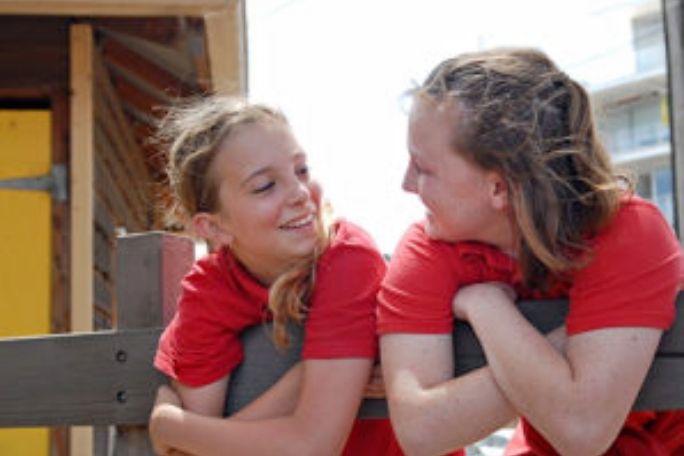Lesson summary
The Enviroweek Wild Child Action encourages students to connect with nature for health and wellbeing. This resource is structured in three parts – each composed of individual activities.
Part 1 – Tune In: Students explore a local area focusing on sensory information about plant diversity.
Part 2 – Act: Students develop their own Wild Child Action facilitating a connection with nature.
Part 3 – Share: Students share their experiences and inspire others to take action.
Learning intentions:
Students will...
- observe different plant species and their structures. Among the diverse plant structures are many different leaf shapes, flowers and bark.
- Understand that species of plants can be separated using the plant’s different structures and growth patterns.
- photograph plant structures and collect leaves.
- work in groups to develop Challenges that promote connections with nature.
- develop communication pieces based on their experiences.
Lesson guides and printables
Lesson details
Curriculum mapping
Australian Curriculum content descriptions:
Foundation Science:
- Science involves exploring and observing the world using the senses (ACSHE013)
Foundation Health and Physical Education:
- Participate in play that promotes engagement with outdoor settings and the natural environment (ACPPS007)
Year 1 Science:
- Use a range of methods to sort information, including drawings and provided tables (ACSIS027)
Year 2 Science:
- Use a range of methods to sort information, including drawings and provided tables (ACSIS040)
Years 1 & 2 Health and Physical Education:
- Identify and explore natural and built environments in the local community where physical activity can take place (ACPPS023)
Year 3 Science:
- Living things can be grouped on the basis of observable features and can be distinguished from non-living things (ACSSU044)
- Safely use appropriate materials, tools or equipment to make and record observations, using formal measurements and digital technologies as appropriate (ACSIS055)
Year 4 Science:
- Living things, including plants and animals, depend on each other and the environment to survive (ACSSU073)
- Safely use appropriate materials, tools or equipment to make and record observations, using formal measurements and digital technologies as appropriate (ACSIS066)
Years 3 & 4 Health and Physical Education:
- Participate in outdoor games and activities to examine how participation promotes a connection between the community, natural and built environments, and health and wellbeing (ACPPS041)
Year 5 Science:
- With guidance, plan appropriate investigation methods to answer questions or solve problems (ACSIS086)
- Communicate ideas, explanations and processes in a variety of ways, including multi-modal texts (ACSIS093)
Year 6 Science:
- With guidance, plan appropriate investigation methods to answer questions or solve problems (ACSIS103)
- Communicate ideas, explanations and processes in a variety of ways, including multi-modal texts (ACSIS110)
Years 5 & 6 Health and Physical Education:
- Explore how participation in outdoor activities supports personal and community health and wellbeing and creates connections to the natural and built environment (ACPPS059)
Syllabus outcomes: STe-4WS, ST1-4WS, ST2-4WS, ST3-4WS, ST2-10LW, ALES1.6, ALS1.6, ALS2.6, ALS3.6.
General capabilities: Critical and creative thinking.
Cross-curriculum priorities: Sustainability OI2.
Additional info
This is an original Cool.org lesson. Facts and figures in these lessons may have changed since this lesson was published. We always endeavour to update our resources in a timely manner, but if you see an error or issue in our resources please get in touch with us.


Welcome back!
Don't have an account yet?
Log in with:
By signing up to Cool.org you consent and agree to Cool's privacy policy to
store, manage and process your personal information. To read more, please see
our privacy policy here(Opens in new tab).
Create your free Cool.org account.
Many of our resources are free, with an option to upgrade to Cool+ for premium content.
Already have an account?
Sign up with:
By signing up to Cool.org you consent and agree to Cool's privacy policy to
store, manage and process your personal information. To read more, please see
our privacy policy here(Opens in new tab).